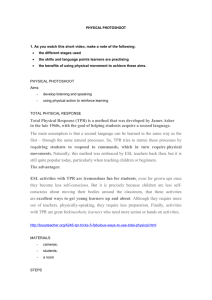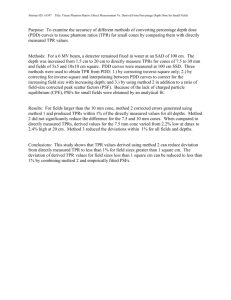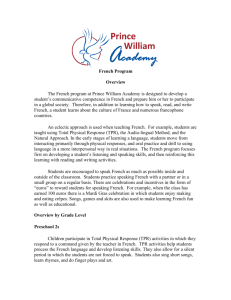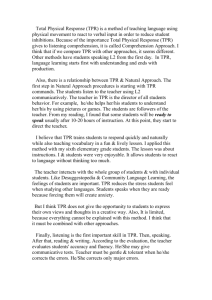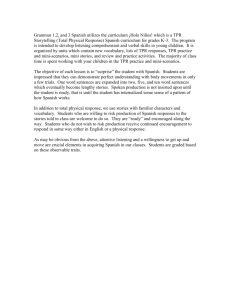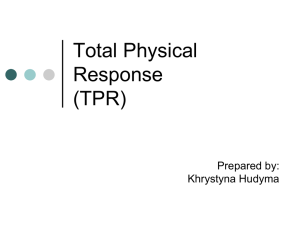lab3 part 2 last part of discussion
advertisement
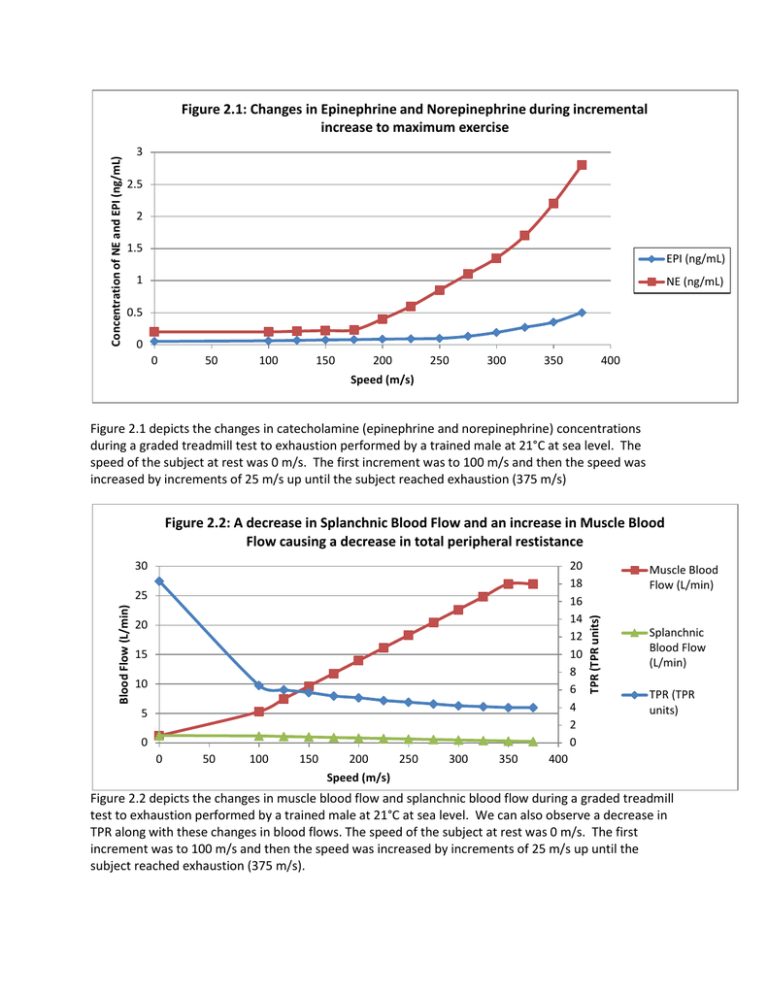
Concentration of NE and EPI (ng/mL) Figure 2.1: Changes in Epinephrine and Norepinephrine during incremental increase to maximum exercise 3 2.5 2 1.5 EPI (ng/mL) 1 NE (ng/mL) 0.5 0 0 50 100 150 200 250 300 350 400 Speed (m/s) Figure 2.1 depicts the changes in catecholamine (epinephrine and norepinephrine) concentrations during a graded treadmill test to exhaustion performed by a trained male at 21°C at sea level. The speed of the subject at rest was 0 m/s. The first increment was to 100 m/s and then the speed was increased by increments of 25 m/s up until the subject reached exhaustion (375 m/s) Figure 2.2: A decrease in Splanchnic Blood Flow and an increase in Muscle Blood Flow causing a decrease in total peripheral restistance 20 18 16 14 12 10 8 6 4 2 0 Blood Flow (L/min) 25 20 15 10 5 0 0 50 100 150 200 250 300 350 Muscle Blood Flow (L/min) TPR (TPR units) 30 Splanchnic Blood Flow (L/min) TPR (TPR units) 400 Speed (m/s) Figure 2.2 depicts the changes in muscle blood flow and splanchnic blood flow during a graded treadmill test to exhaustion performed by a trained male at 21°C at sea level. We can also observe a decrease in TPR along with these changes in blood flows. The speed of the subject at rest was 0 m/s. The first increment was to 100 m/s and then the speed was increased by increments of 25 m/s up until the subject reached exhaustion (375 m/s). During exercise the sympathetic nervous system (SNS) plays a role in regulating blood flow to different parts of the body. Activation of the SNS causes an increase in release of the neurotransmitter norepinephrine (NE) by its neurons. The neurotransmitter NE will then stimulate the adrenal medulla causing it to release the hormones epinephrine (EPI) and NE (Plowman & Smith, 2011). As figure 2.1 demonstrates, our subjects EPI and NE levels increased during an increase to maximum exercise. The reason being is that these catecholamines induce smooth muscle contraction of the visceral vasculature causing these vessels to constrict (McAllister, 1998). This occurs in order to increase blood flow to the heart and active skeletal muscles and decrease the blood flow to inactive muscles, skin, kidneys, and organs served by the splanchnic circulation (McAllister, 1998). However, this increase in catecholamines only really begins once the subject reaches a speed of close to 200 m/s. In fact, during incremental increase to maximum exercise, the neurotransmitter NE starts to be released at intensities close to 70% of VO2 max (Plowman & Smith, 2011). This release of neurotransmitter can increase the basal concentrations of catecholamines by 5 to 10 times more (Zouhal, Jacob, Delamarche, & Gratas-Delamarche, 2008). Furthermore, as exercise intensity increases the metabolic needs of the active muscles and heart increase which is why the SNS causes more blood to be redirected towards the contracting muscles (Plowman & Smith, 2011). This idea is shown in figure 2.2 where we can see a large increase in muscle blood flow and a slight decrease in splanchnic blood flow as the intensity of the exercise increases; the intensity in this case being the speed that the subject is running at. We can also observe in figure 2.2 that the total peripheral resistance (TPR) also decreases as the intensity increases. TPR is the resistance that results from factors opposing the flow of blood like vasoconstriction which can be caused by the SNS (Plowman & Smith, 2011). Therefore, a decrease in TPR must be due to the fact that there is a greater increase in vasodilation in the active muscle vasculature then there is vasoconstriction in the splanchnic vasculature (Sprangers, Wesseling, Imholz, Imholz, & Wieling, 1991). What mechanisms exist in muscle to counteract these effects (ie blood vessel function). References Marx, H. J., Rowell, L. B., Conn, R. D., Bruce, R. A., & Kusumi, F. (1967). Maintenance of aortic pressure and total peripheral resistance during exercise in heat. J Appl Physiol, 22(3), 519-525. McAllister, R. M. (1998). Adaptations in control of blood flow with training: splanchnic and renal blood flows. Med Sci Sports Exerc, 30(3), 375-381. Zouhal, H., Jacob, C., Delamarche, P., & Gratas-Delamarche, A. (2008). Catecholamines and the effects of exercise, training and gender. Sports Med, 38(5), 401-423.
